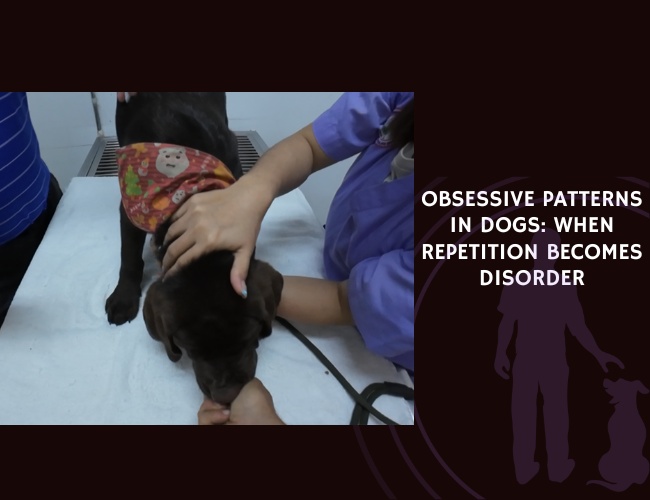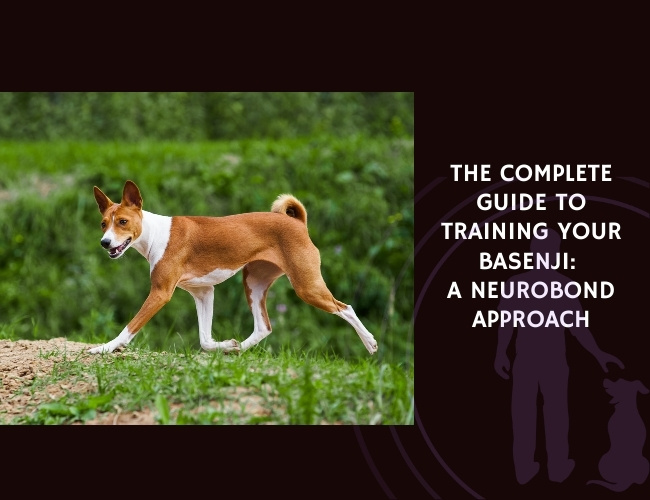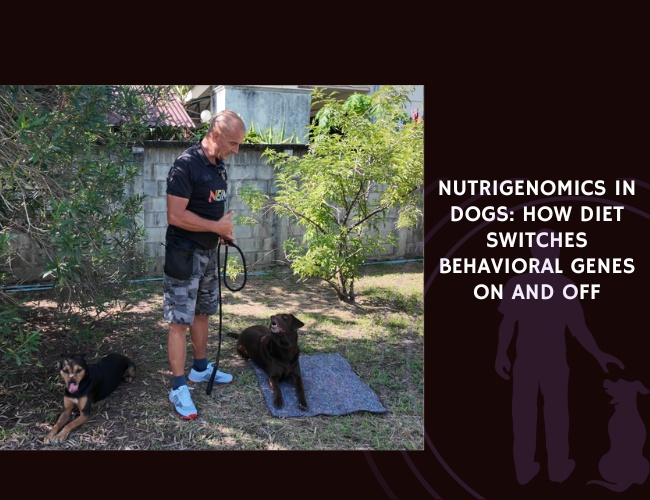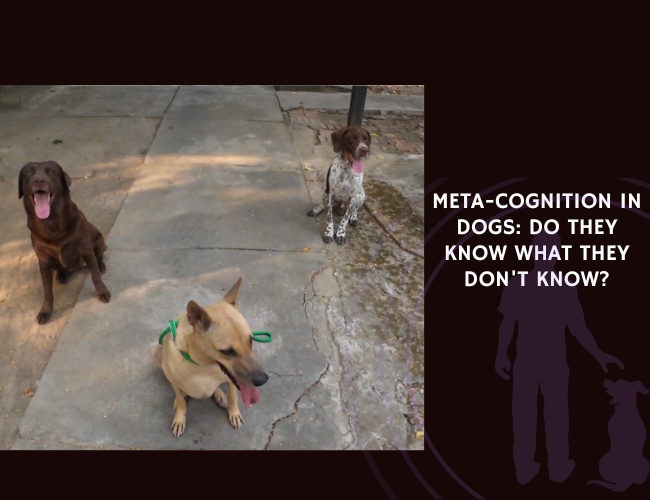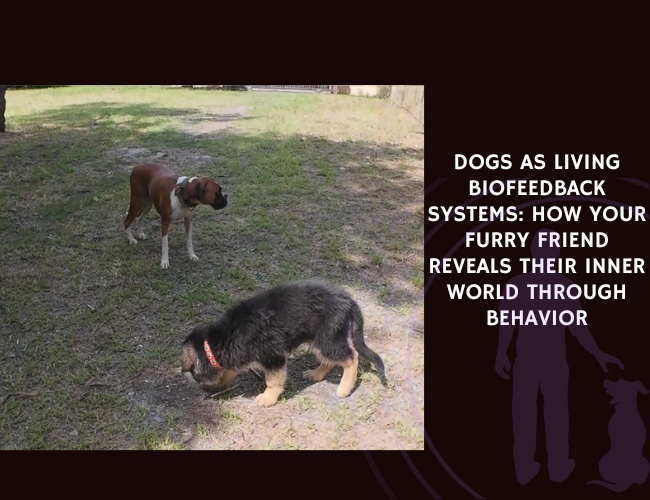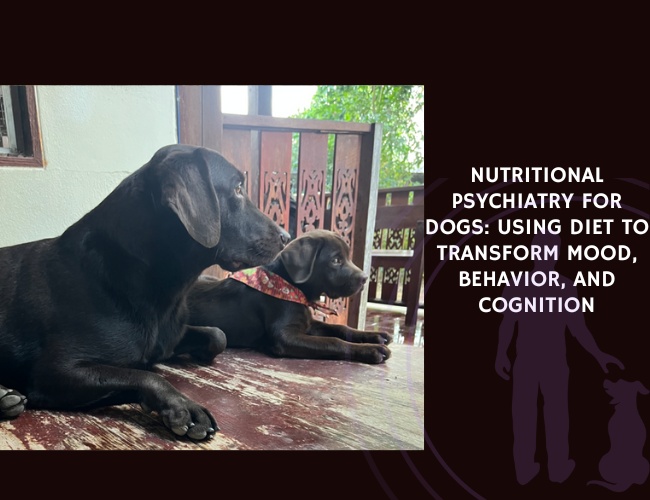Introduction
Have you ever watched your furry friend chase their tail endlessly or lick the same spot until it’s raw? While many repetitive behaviors in dogs are perfectly normal, sometimes these patterns cross a line into something more concerning. Canine Compulsive Disorder (CCD) affects countless dogs worldwide, transforming innocent habits into distressing obsessions that impact both pets and their devoted owners.
Understanding when your dog’s repetitive behaviors become problematic isn’t just about recognizing symptoms—it’s about deepening the bond you share with your four-legged companion. This comprehensive guide will walk you through the complex world of canine obsessive behaviors, from the latest scientific understanding to practical management strategies that can transform your dog’s quality of life.
Whether you’re a concerned pet parent witnessing troubling behaviors or a dog enthusiast seeking to understand the canine mind better, let us guide you through this journey of discovery and healing. Together, we’ll explore how to recognize, understand, and address obsessive patterns in dogs with compassion and scientific insight. 🐾
Understanding Canine Compulsive Disorder
What Makes a Behavior “Compulsive”?
Not every repetitive action your dog performs signals a problem. Dogs naturally engage in repetitive behaviors for various reasons—from the joyful anticipation of dinner time to the instinctive circling before lying down. The key difference lies in purpose and control.
Normal repetitive behaviors serve clear functions in your dog’s life. That excited spinning when you grab the leash? It’s purposeful anticipation. The methodical grooming after meals? Natural hygiene behavior. These actions have beginnings and endings, responding appropriately to environmental cues.
Compulsive behaviors, however, tell a different story. They appear disconnected from any clear purpose, persisting even when they cause physical harm or prevent normal activities. Imagine a dog who licks their paw not just to clean it, but for hours on end, creating wounds that never heal. Or consider a tail-chasing dog who can’t stop, even when exhausted or called for their favorite treat.
The distinction becomes clearer when we observe:
- Duration: Compulsive behaviors often continue for extended periods
- Interruptibility: Normal behaviors stop easily; compulsive ones resist interruption
- Context: While normal behaviors fit the situation, compulsive ones occur regardless of surroundings
- Impact: Compulsive behaviors interfere with eating, sleeping, playing, and socializing
The Science Behind the Obsession
Deep within your dog’s brain, a complex interplay of chemicals and neural pathways governs behavior. When these systems become imbalanced, compulsive patterns can emerge. Research suggests that dogs with CCD experience disruptions in their serotonin and dopamine systems—the same neurotransmitters involved in human obsessive-compulsive disorder.
This neurobiological similarity isn’t coincidental. Dogs and humans share remarkably similar brain structures and neurochemical systems, making our canine companions valuable partners in understanding compulsive behaviors across species. When serotonin levels drop or dopamine signaling goes awry, both species can develop repetitive behaviors that feel impossible to control.
The brain regions involved include areas responsible for:
- Habit formation (basal ganglia)
- Emotional regulation (limbic system)
- Decision-making (prefrontal regions)
- Reward processing (dopaminergic pathways)
This neurological foundation helps explain why some dogs seem “stuck” in behavioral loops, unable to break free despite negative consequences. It’s not defiance or stubbornness—it’s biology expressing itself through behavior.
Common Obsessive Behaviors in Dogs
Movement-Based Compulsions
Tail chasing ranks among the most recognizable compulsive behaviors. While puppies often chase their tails in play, adult dogs who spin relentlessly may be experiencing something more serious. You might notice your dog’s eyes glaze over during these episodes, seemingly disconnected from their surroundings.
Pacing and circling create invisible tracks in your home. These dogs follow the same routes repeatedly—around the coffee table, along the fence line, or in tight circles. Unlike a dog pacing from excitement before a walk, compulsive pacers continue even when physically tired or emotionally stressed.
Shadow and light chasing transforms innocent play into obsession. What starts as amusing attempts to catch sunbeams can escalate into frantic pursuits of any moving light or shadow. These dogs may ignore meals, skip bathroom breaks, and exhaust themselves chasing intangible targets.
Self-Directed Behaviors
Excessive licking (acral lick dermatitis) creates a heartbreaking cycle. Dogs focus on specific spots—often the lower legs or paws—licking until the skin becomes raw and infected. The resulting pain may actually reinforce the licking behavior, creating wounds that never fully heal.
Overgrooming extends beyond healthy hygiene. These dogs pull out fur, creating bald patches and skin irritation. You might find clumps of fur around your home and notice your dog grooming even when their coat is already clean.
Self-mutilation represents the most severe form of self-directed compulsion. Dogs may bite their own tails, chew their feet, or scratch until they bleed. This distressing behavior requires immediate veterinary attention and comprehensive treatment.
Environmental Interactions
Fly snapping occurs when dogs bite at invisible insects. They’ll suddenly snap at the air, often looking upward, as if tracking imaginary flies. This behavior can happen anywhere, anytime, regardless of actual insect presence.
Wall or floor licking targets specific surfaces repeatedly. Dogs may spend hours licking the same spot on a wall, floor, or furniture piece, sometimes wearing away paint or leaving permanent marks.
Object fixation transforms everyday items into obsessions. A dog might stare at a particular toy for hours, carry it everywhere, or guard it excessively—far beyond normal resource guarding behaviors.
Theoretical Foundations of CCD
Learning Theory Perspectives
From a behavioral standpoint, compulsive behaviors often begin as normal responses that become reinforced through various mechanisms. Operant conditioning plays a crucial role—when a behavior provides relief from anxiety or receives attention (even negative attention), it’s more likely to repeat.
Consider a dog who starts licking during a thunderstorm. The repetitive motion provides slight anxiety relief, reinforcing the behavior. Over time, the dog may begin licking whenever stressed, eventually losing the connection to the original trigger. This process, called behavioral drift, explains how normal coping mechanisms evolve into compulsions.
Classical conditioning also contributes when environmental cues become associated with the compulsive behavior. A dog might begin tail chasing every time they enter a specific room or hear particular sounds, creating conditioned compulsive responses.
Anxiety and Fear Components
Anxiety doesn’t just accompany compulsive behaviors—it often drives them. Dogs experiencing chronic stress or fear may develop compulsive behaviors as maladaptive coping mechanisms. The repetitive actions provide temporary relief from overwhelming emotions, similar to how humans might bite their nails or tap their feet when anxious.
Fear-based compulsions often emerge after traumatic experiences. A dog attacked while on a walk might develop compulsive scanning behaviors, constantly checking for threats. Another might obsessively lick after medical procedures, associating the behavior with comfort during recovery.
The relationship between anxiety and compulsion creates a vicious cycle:
- Anxiety triggers the compulsive behavior
- The behavior provides temporary relief
- Anxiety returns when the behavior stops
- The compulsion strengthens as the only “solution”
Habit Formation and Persistence
Understanding how habits form in the canine brain illuminates why compulsive behaviors prove so resistant to change. Neural pathways strengthen with repetition, creating behavioral “highways” that become the brain’s default routes.
In healthy dogs, habits serve important functions—remembering where to eliminate, how to request attention, or when to expect meals. But in CCD, these same mechanisms create persistent behavioral loops that override conscious control.
The transition from voluntary to compulsive involves:
- Neuroplasticity changes that reinforce specific neural pathways
- Dopamine dysregulation that affects reward processing
- Stress hormone imbalances that maintain heightened arousal states
- Cognitive inflexibility that prevents behavioral adaptation

Diagnostic Criteria and Assessment
Professional Evaluation Process
Diagnosing CCD requires more than observing repetitive behaviors. Veterinary behaviorists use comprehensive assessment protocols to distinguish compulsions from medical conditions, normal behaviors, and other psychological issues.
The diagnostic journey typically includes:
Your veterinarian will begin with a thorough physical examination, checking for pain, neurological issues, or other medical conditions that might cause repetitive behaviors. Blood work, imaging studies, and specialized tests may rule out underlying health problems.
The behavioral history forms the cornerstone of diagnosis. You’ll be asked detailed questions about:
- When behaviors began and how they’ve progressed
- Specific triggers or patterns you’ve noticed
- Your dog’s daily routine and environment
- Previous training or behavioral interventions attempted
- Family dynamics and recent life changes
Many professionals use standardized questionnaires to quantify behavior severity and track treatment progress. These tools help create objective baselines and identify subtle improvements that might otherwise go unnoticed.
Distinguishing CCD from Other Conditions
Medical differentials must be carefully considered. Skin conditions might cause excessive licking, neurological disorders could trigger circling, and pain might manifest as self-mutilation. Your veterinarian will systematically rule out these possibilities.
Behavioral differentials include:
- Attention-seeking behaviors that stop when ignored
- Boredom-related activities that cease with adequate stimulation
- Separation anxiety behaviors occurring only when alone
- Normal breed-specific behaviors like herding dog circling
The key distinguishing factors of true CCD include:
- Persistence despite environmental changes
- Difficulty interrupting the behavior
- Apparent lack of conscious control
- Progressive worsening without treatment
- Significant impact on quality of life
Severity Assessment
Professionals evaluate CCD severity across multiple dimensions:
Frequency and duration: How often do episodes occur? How long do they last?
Physical impact: Has the behavior caused injuries, weight loss, or other health issues?
Functional impairment: Can your dog still engage in normal activities like eating, sleeping, and playing?
Owner impact: How significantly does the behavior affect your household and relationship with your dog?
This multidimensional assessment guides treatment planning and helps predict prognosis. Mild cases might respond to environmental modification alone, while severe cases often require combined behavioral and pharmacological interventions.
Neurobiological and Genetic Factors
Brain Chemistry and Compulsions
The neurobiological underpinnings of CCD reveal fascinating parallels with human psychiatric conditions. Serotonin, often called the “happiness chemical,” plays a crucial role in mood regulation and behavioral inhibition. Dogs with CCD frequently show signs of serotonin dysfunction, similar to humans with OCD.
Dopamine governs reward and motivation systems. In compulsive disorders, dopamine signaling becomes dysregulated, creating artificial “rewards” for repetitive behaviors. This explains why dogs seem to derive satisfaction from behaviors that appear purposeless or even harmful.
GABA (gamma-aminobutyric acid), the brain’s primary inhibitory neurotransmitter, may also be involved. Reduced GABA activity could contribute to the inability to suppress repetitive behaviors, allowing compulsions to continue unchecked.
Research using advanced imaging techniques in dogs has revealed:
- Altered activity in regions controlling habit formation
- Differences in neural connectivity patterns
- Changes in neurotransmitter receptor density
- Structural variations in behavior-regulating brain areas
Genetic Predispositions
While no single “compulsion gene” exists, research strongly suggests hereditary components to CCD. Certain breeds show higher prevalence of specific compulsive behaviors, indicating genetic influence.
Breed-specific tendencies include:
- Bull Terriers: Higher rates of spinning and tail chasing
- Doberman Pinschers: Increased flank sucking behaviors
- German Shepherds: Greater prevalence of tail chasing
- Labrador Retrievers: More frequent acral lick dermatitis
- Border Collies: Higher rates of shadow/light chasing
These breed predispositions likely reflect:
- Selective breeding for specific traits that inadvertently increase compulsion risk
- Genetic variations affecting neurotransmitter systems
- Inherited differences in stress response systems
- Breed-specific neurological characteristics
Epigenetic Influences
Beyond inherited genes, epigenetic factors—environmental influences on gene expression—play crucial roles. Stressful early life experiences can alter how genes are expressed, potentially increasing compulsion vulnerability.
Epigenetic factors include:
- Prenatal stress affecting fetal brain development
- Early weaning disrupting normal behavioral development
- Nutritional deficiencies during critical growth periods
- Environmental toxins altering neural development
Understanding these complex interactions helps explain why littermates raised in different environments may show vastly different behavioral outcomes, despite sharing genetic backgrounds.
Environmental and Developmental Risk Factors
Early Life Experiences
The foundation for many behavioral issues, including CCD, often lies in early puppyhood. Critical socialization periods between 3-14 weeks profoundly influence future behavior patterns. Puppies who miss crucial social experiences during this window may develop anxiety-driven compulsions later.
Trauma during development can have lasting effects. A single frightening experience during fear periods can create lasting behavioral changes. Puppies attacked by other dogs, subjected to harsh training, or experiencing medical trauma may develop compulsive behaviors as coping mechanisms.
Maternal behavior also influences offspring development. Anxious mothers may pass stress responses to their puppies through both genetic and behavioral mechanisms. Puppies learn coping strategies by observing their mothers, potentially inheriting maladaptive patterns.
Environmental Stressors
Modern living presents unique challenges for our canine companions. Urban environments with constant noise, limited space, and reduced natural behaviors can contribute to compulsive behavior development.
Common environmental stressors include:
- Inconsistent daily routines disrupting predictability
- Multi-pet households with unresolved conflicts
- Frequent moving or environmental changes
- Exposure to construction, sirens, or other loud noises
- Limited access to appropriate exercise and mental stimulation
Confinement stress deserves special attention. Dogs spending excessive time in crates, small apartments, or yards without enrichment show higher rates of compulsive behaviors. The frustration of restricted movement may manifest as repetitive actions within available space.
Social and Familial Factors
Your dog’s social environment profoundly impacts their psychological well-being. Family dynamics play crucial roles—tension between household members, inconsistent rules, or major life changes can trigger or worsen compulsive behaviors.
Owner behavior inadvertently reinforces compulsions through:
- Giving attention (even negative) during episodes
- Attempting to physically stop behaviors, increasing anxiety
- Inconsistent responses creating unpredictability
- Punishment that increases stress without addressing causes
Social isolation from other dogs or limited human interaction can contribute to compulsive behavior development. Dogs are inherently social creatures, and deprivation of appropriate social contact can manifest as behavioral abnormalities.
Looping. Licking. Lost.
Pattern without pause.
What begins as a reaction becomes a ritual—tail chasing, paw licking, fly snapping—until the dog no longer remembers the why, only the need to repeat.
Neural echoes on a loop.
Inside the brain, serotonin and dopamine misfire, turning instinct into obsession. This isn’t disobedience—it’s a neurochemical trap disguised as behaviour.



From symptom to signal.
The key isn’t in stopping the act—it’s in decoding what the behaviour replaces. Because obsessive patterns in dogs don’t ask for control. They plead for regulation.
Treatment Approaches and Interventions
Behavioral Modification Strategies
Successful CCD treatment begins with comprehensive behavioral modification. Environmental management forms the foundation—identifying and modifying triggers while creating supportive surroundings for your dog.
Counter-conditioning works by changing your dog’s emotional response to triggers. If tail chasing begins during thunderstorms, you might pair storm sounds with extremely positive experiences, gradually changing the emotional association. This process requires patience and precise timing but can produce lasting results.
Differential reinforcement involves rewarding alternative behaviors incompatible with the compulsion. When your dog begins excessive licking, redirect to a food puzzle or training exercise, rewarding engagement with these healthier activities. Over time, the brain develops new behavioral patterns to replace compulsive ones.
Response substitution teaches specific alternative behaviors for triggering situations. A dog who compulsively licks might learn to fetch a toy instead when feeling anxious. This gives them a productive outlet for emotional energy while breaking the compulsive cycle.
Key principles for behavioral modification success:
- Consistency across all family members
- Patience with gradual progress
- Positive reinforcement focus
- Avoiding punishment that increases anxiety
- Regular practice and maintenance
Environmental Enrichment
Creating an enriched environment addresses underlying needs that may fuel compulsive behaviors. Mental stimulation through puzzle feeders, scent work, and training challenges engages your dog’s mind, reducing anxiety and boredom that contribute to compulsions.
Physical enrichment includes:
- Varied walking routes providing new sensory experiences
- Safe spaces for natural behaviors like digging or chewing
- Rotating toy selection to maintain novelty
- Interactive play sessions meeting breed-specific needs
- Appropriate social interactions with other dogs
Sensory enrichment often overlooked but crucial:
- Calming music or white noise for anxious dogs
- Aromatherapy with dog-safe essential oils
- Different textures for tactile exploration
- Visual variety through window perches or aquariums
- Taste enrichment through varied healthy treats
Pharmacological Interventions
When behavioral interventions alone prove insufficient, medication can provide crucial support. Clomipramine, a tricyclic antidepressant, remains the gold standard for CCD treatment, with extensive research supporting its efficacy.
How medications help:
- Restore neurotransmitter balance
- Reduce anxiety driving compulsive behaviors
- Increase behavioral flexibility
- Support learning during behavioral modification
- Provide relief while addressing underlying causes
Common medications include:
- Clomipramine: Increases serotonin availability, reducing compulsive behaviors
- Fluoxetine: An SSRI offering similar benefits with different side effect profiles
- Sertraline: Another SSRI option for dogs not responding to other medications
- Gabapentin: May help with anxiety components
- Trazodone: Useful for acute anxiety management
Medication requires veterinary supervision with:
- Baseline blood work to ensure safety
- Gradual dose adjustments
- Regular monitoring for side effects
- Patience for full effects (6-8 weeks typically)
- Commitment to combining with behavioral therapy
Integrative and Complementary Therapies
Holistic approaches can complement traditional treatments. Acupuncture may help reduce anxiety and restore energetic balance. Some dogs show remarkable improvement with regular sessions, particularly when combined with other interventions.
Nutritional therapy addresses potential deficiencies affecting brain function:
- Omega-3 fatty acids supporting neural health
- B-vitamins crucial for neurotransmitter production
- Antioxidants protecting against neural inflammation
- Probiotics influencing the gut-brain axis
- Specialized diets designed for anxious dogs
Other complementary approaches:
- Massage therapy reducing muscle tension from repetitive movements
- Hydrotherapy providing low-stress exercise
- Herbal supplements (with veterinary guidance)
- Thundershirts or anxiety wraps for calming pressure
- Pheromone therapy mimicking calming maternal signals
Management Strategies for Pet Owners
Creating a Supportive Home Environment
Your home environment can either support or hinder your dog’s recovery. Predictable routines provide security for anxious dogs—consistent meal times, walk schedules, and bedtime rituals reduce stress that fuels compulsions.
Safe spaces give your dog refuge when overwhelmed. Create quiet areas with comfortable bedding, away from household chaos. Some dogs benefit from covered crates (doors open) providing den-like security.
Trigger management requires detective work:
- Keep a behavior diary noting episodes and circumstances
- Identify patterns in timing, location, or preceding events
- Modify environment to reduce exposure to triggers
- Gradually reintroduce triggers during controlled training
Family coordination ensures everyone responds consistently:
- Share written protocols for handling episodes
- Designate primary handlers for consistency
- Educate children about appropriate interactions
- Coordinate schedules to prevent alone time if needed
Exercise and Mental Stimulation
Physical activity and mental challenges address multiple factors contributing to CCD. Exercise releases endorphins, reduces anxiety, and provides appropriate outlets for energy that might otherwise fuel compulsions.
Breed-appropriate exercise includes:
- Herding breeds: Activities mimicking work like agility or herding balls
- Hunting breeds: Scent work and retrieving games
- Terriers: Digging boxes and prey-simulation toys
- Working breeds: Pulling exercises and carrying backpacks
- Companion breeds: Interactive play and training
Mental stimulation strategies:
- Daily training sessions learning new tricks
- Food puzzles increasing in difficulty
- Hide-and-seek games with treats or toys
- Novel experiences like new walking routes
- Doggy daycare or playdates for social enrichment
Balance is crucial—over-exercise can increase stress and injury risk, while under-stimulation contributes to behavioral problems. Watch your dog’s individual needs and adjust accordingly.
Building Consistent Routines
Structure provides security for dogs prone to anxiety and compulsions. Daily schedules should include:
- Regular wake and sleep times
- Predictable meal schedules
- Consistent exercise periods
- Designated training or play times
- Quiet relaxation periods
Transition rituals help dogs navigate daily changes:
- Pre-walk preparation routines
- Departure cues when leaving home
- Return greetings kept calm and consistent
- Bedtime wind-down activities
- Weekend routines similar to weekdays
Flexibility within structure prevents rigidity:
- Vary activities within time slots
- Introduce small changes gradually
- Maintain core routine elements
- Build resilience through controlled variations
- Reward adaptability to minor changes
When to Seek Professional Help
Recognizing when you need expert assistance can make the difference between management and resolution. Immediate professional help is warranted when:
- Self-injury occurs from compulsive behaviors
- Compulsions prevent eating, drinking, or sleeping
- Aggressive behavior accompanies compulsions
- Multiple household pets are affected
- Your quality of life significantly suffers
Finding qualified professionals:
- Seek board-certified veterinary behaviorists when possible
- Ask for referrals from your regular veterinarian
- Interview potential trainers about CCD experience
- Verify credentials and methodology
- Ensure they support combined behavioral/medical approaches
Preparing for appointments:
- Document behaviors with video when possible
- Complete behavior diaries before visits
- List all attempted interventions and results
- Bring medical records and medication history
- Prepare questions about treatment options

Cross-Species Insights and Research
Comparative Studies with Human OCD
The remarkable similarities between human OCD and canine CCD provide valuable insights for both species. Shared characteristics include:
- Repetitive behaviors providing temporary anxiety relief
- Similar brain regions showing altered activity
- Comparable neurotransmitter imbalances
- Genetic components influencing susceptibility
- Response to similar pharmaceutical interventions
Key differences remind us that dogs aren’t simply “furry humans”:
- Dogs can’t report intrusive thoughts
- Canine compulsions often involve species-specific behaviors
- Social pressures differ between species
- Treatment compliance depends on human caretakers
- Cultural factors don’t influence canine expression
These comparisons help researchers develop better treatments for both species while respecting unique needs of each.
Animal Models in Compulsion Research
Dogs serve as valuable natural models for studying compulsive disorders. Unlike laboratory-induced models, CCD occurs spontaneously, providing authentic insights into disorder development and treatment.
Research advantages of canine models:
- Shared living environments with humans
- Similar genetic disorder expressions
- Comparable pharmaceutical responses
- Observable behavioral outcomes
- Ethical treatment possibilities
Current research directions include:
- Genetic mapping of compulsion-related genes
- Brain imaging during compulsive episodes
- Novel pharmaceutical development
- Behavioral intervention refinements
- Environmental factor identification
Future Directions in Treatment
Emerging research promises exciting developments in CCD treatment. Personalized medicine approaches may soon match specific treatments to individual genetic profiles, improving outcome predictions.
Innovative treatments under investigation:
- Deep brain stimulation for severe cases
- Targeted gene therapy approaches
- Novel pharmaceutical compounds
- Virtual reality for behavioral therapy
- Biomarker development for early detection
Technology integration offers new possibilities:
- Wearable devices monitoring behavior patterns
- Apps tracking treatment progress
- Telemedicine for remote consultations
- AI-assisted behavior analysis
- Smart home modifications supporting treatment
Living with a Dog with CCD
Daily Management Techniques
Living with a compulsive dog requires patience, understanding, and practical strategies. Episode management focuses on minimizing harm while avoiding reinforcement:
When compulsive behavior begins:
- Remain calm—your anxiety increases theirs
- Use trained redirection cues when possible
- Avoid physical intervention unless preventing injury
- Document episode details for treatment tracking
- Implement predetermined management protocols
Preventing escalation:
- Recognize early warning signs
- Intervene before full episodes develop
- Maintain consistent daily routines
- Address stress proactively
- Celebrate small improvements
Medication management requires diligence:
- Set phone reminders for doses
- Monitor for side effects
- Track behavioral changes
- Maintain medication logs
- Communicate regularly with veterinarians
Supporting Your Dog’s Emotional Well-being
Beyond managing symptoms, nurturing your dog’s overall emotional health promotes recovery. Confidence building through positive training experiences helps anxious dogs develop resilience.
Emotional support strategies:
- Celebrate non-compulsive behaviors enthusiastically
- Provide predictable affection and attention
- Avoid overwhelming situations when possible
- Build positive associations with previous triggers
- Maintain your own emotional regulation
The human-animal bond itself provides therapeutic benefits. Quality time spent in calm, positive interactions releases oxytocin in both species, promoting healing and connection. Never underestimate the power of simply being present with your dog. 🧡
Long-term Prognosis and Expectations
Recovery from CCD rarely follows a straight line. Realistic expectations prevent discouragement during setbacks while celebrating genuine progress.
Factors influencing prognosis:
- Early intervention improves outcomes
- Severity at diagnosis affects timeline
- Owner compliance with treatment
- Presence of comorbid conditions
- Environmental stability
Success measurement goes beyond eliminating behaviors:
- Reduced episode frequency or intensity
- Improved quality of life
- Better stress management
- Increased behavioral flexibility
- Stronger human-animal bond
Many dogs achieve significant improvement with proper treatment, though some may need lifelong management. The journey requires commitment, but the reward—watching your beloved companion rediscover joy and peace—makes every effort worthwhile.
Prevention Strategies
Early Socialization and Training
Prevention begins before compulsions develop. Proper socialization during critical developmental periods builds resilient, confident dogs less likely to develop anxiety-driven behaviors.
Essential socialization experiences:
- Positive interactions with various people
- Controlled exposure to other animals
- Introduction to different environments
- Handling exercises for grooming and veterinary care
- Exposure to common household sounds and activities
Foundation training establishes communication and confidence:
- Basic obedience using positive methods
- Impulse control exercises
- Relaxation training and settling behaviors
- Problem-solving activities
- Appropriate play behaviors
Stress Reduction in Puppyhood
Minimizing early life stress significantly reduces CCD risk. Choosing responsible breeders who prioritize:
- Appropriate socialization protocols
- Low-stress whelping environments
- Health testing of parent dogs
- Genetic diversity in breeding programs
- Proper maternal care support
Early home environment considerations:
- Gradual introduction to new home
- Consistent, gentle handling
- Protected spaces for retreat
- Age-appropriate stimulation
- Positive veterinary experiences
Breed-Specific Considerations
Understanding your breed’s tendencies helps prevent problems. High-risk breeds benefit from:
- Extra attention to early socialization
- Breed-appropriate outlets for natural behaviors
- Vigilant monitoring for early signs
- Proactive anxiety management
- Regular veterinary behavioral check-ins
Working breed management:
- Provide job-like activities
- Mental challenges matching physical exercise
- Structured training programs
- Appropriate social interactions
- Regular routine variations
Remember: breed tendencies are predispositions, not destinies. Proper management can prevent most compulsive behaviors, even in genetically vulnerable dogs.
Conclusion: Is Your Dog’s Behavior a Concern?
As we’ve explored throughout this comprehensive guide, distinguishing between normal canine quirks and concerning compulsive disorders requires careful observation and professional guidance. Your dog’s repetitive behaviors exist on a spectrum—from endearing personality traits to serious conditions requiring intervention.
Key takeaways to remember:
Understanding CCD begins with recognizing that these behaviors stem from genuine neurobiological differences, not disobedience or attention-seeking. Your dog isn’t choosing to engage in compulsive behaviors—they’re struggling with brain chemistry imbalances that require compassionate, scientific approaches to resolve.
The journey from recognition to recovery involves multiple steps: careful observation, professional diagnosis, comprehensive treatment planning, and patient implementation. Success rarely comes overnight, but with dedication and proper support, most dogs show significant improvement.
Treatment success depends on addressing the whole dog—not just the symptoms. Combining behavioral modification, environmental enrichment, and when necessary, pharmaceutical support, creates the best outcomes. Remember that what works for one dog may need adjustment for another.
Your role as a pet parent is crucial but challenging. Balancing consistency with flexibility, maintaining hope during setbacks, and celebrating small victories requires emotional resilience. Don’t hesitate to seek support for yourself while supporting your dog.
Moving forward with hope:
If you recognize your dog in these descriptions, take heart. CCD is a treatable condition, and help is available. Start by documenting behaviors and consulting with your veterinarian. Early intervention improves outcomes dramatically.
For those whose dogs show minor repetitive behaviors without significant impact, remain vigilant but not anxious. Understanding risk factors and prevention strategies helps you provide environments supporting psychological well-being.
Remember, every dog deserves a life free from the prison of compulsion. With knowledge, compassion, and appropriate treatment, we can help our beloved companions find peace and joy in their daily lives. The bond you share with your dog—built on understanding, patience, and love—provides the foundation for healing.
Whether you’re beginning this journey or well along the path, know that you’re not alone. Countless pet parents navigate similar challenges, and professional support is always available. Your commitment to understanding and helping your furry friend already demonstrates the love that will see you both through to better days.
Together, we can transform repetitive suffering into recovered joy, one patient step at a time. 🐾

